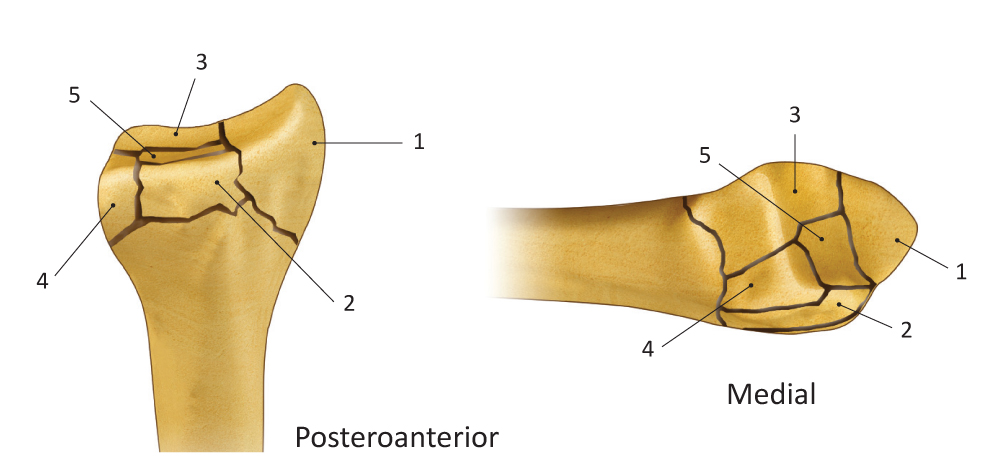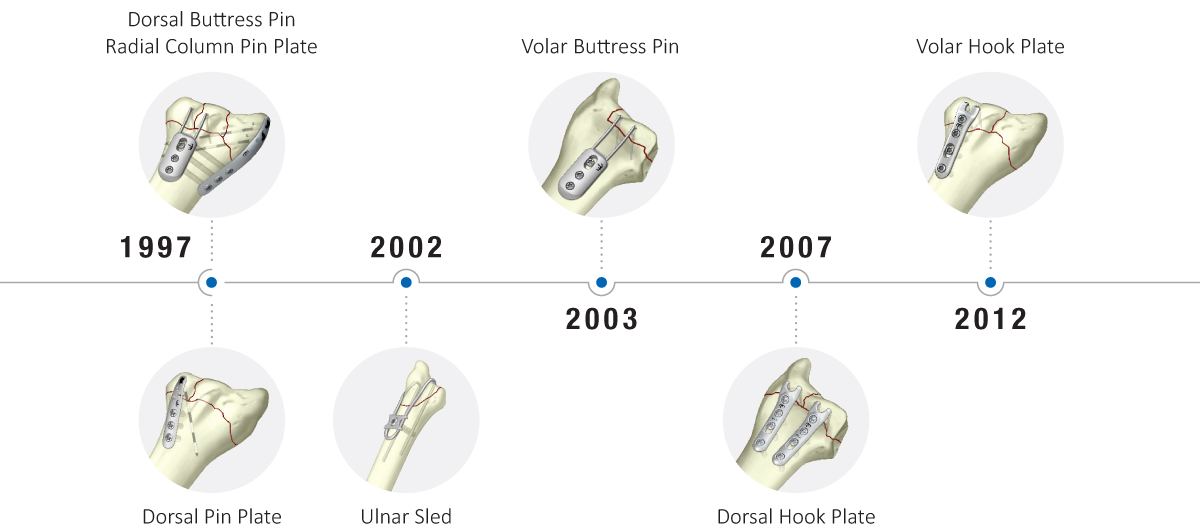Fragment Specific Fixation Philosophy
What Makes TriMed® Unique?
AO methods of plate and screw fixation have significantly improved treatment for many types of fractures in the body, however, these techniques have limitations when applied to periarticular fractures, particularly those with multiple unstable articular fragments. In 1997, TriMed developed a new philosophy and approach that offered a solution to these limitations that didn’t rely on thread purchase from screws, but still provided load sharing fixation of small peri-articular fracture fragments. The Fragment Specific Fixation (FSF) philosophy made internal fixation of the distal radius possible, by avoiding hoop stress and the creation of large drill holes, while reducing loads from cantilever bending.
Fragment Classification System
Fragment Classification System (1998) identifies the common fragments associated with complex periarticular fractures of the distal radius.
- Radial Column
- Dorsal Wall
- Volar Rim
- Ulnar Corner
- Impacted Articular

Fragment Specific Fixation (FSF) Philosophy
Unique fragment specific implants were developed to allow independent fixation as required for each of the five main cortical fragments, while meeting the four principle goals of Fragment Specific Fixation:
Core principles of the FSF Philosophy:
- Identify primary fracture components.
- Independent fixation using implants specific to each fracture component.
- Utilize semi-elastic fixation mechanisms that avoid dependence on thread purchase.
- Create a load sharing construct.

